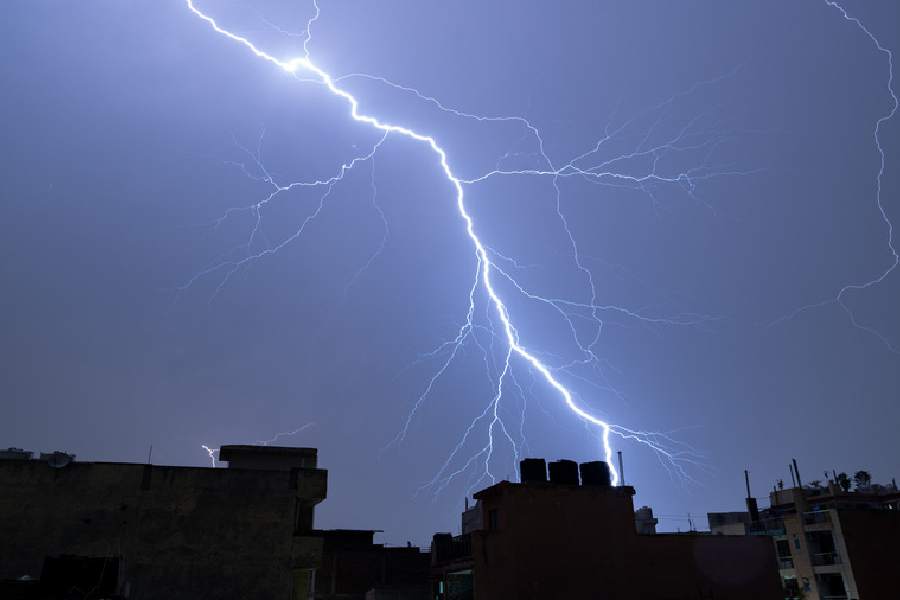Those familiar with some of the voluminous literature on elections, both in India and elsewhere, will readily concede the importance of tracking the campaign in flight. That is because the outcome has an uncanny habit of generating wisdom in hindsight. Retracing the path of an election, beginning with the jostling for nominations in different parties and culminating in the analysis of the outcome, will reveal a cruel truth. Often, the eventual verdict is sharply at variance with the reality as presented by the fourth estate.
During my days in academia, I recall looking closely at how the English-language print media covered the general elections of 1971 and 1984, both of which produced emphatic verdicts in favour of the ruling party. In the 1971 polls, the mainstream newspapers were divided between those (such as The Statesman and The Indian Express) that were viscerally opposed to Prime Minister Indira Gandhi and those that were more favourably inclined. However, editorial positions notwithstanding, the media as a whole failed quite miserably to assess the popular groundswell in favour of the garibi hatao appeal. The belief that the election would result in a hung Lok Sabha was widespread. Likewise, in 1984, a smug media completely failed to gauge the magnitude of the countrywide emotional upsurge at the assassination of Indira Gandhi. It was busy looking at caste and community equations when the mood in the country was in favour of upholding national unity.
In the aftermath of last Sunday’s declaration of the results of the assembly elections in Rajasthan, Madhya Pradesh, Chhattisgarh and Telangana, there has been a rigorous dissection of the results. In the English-language media at least, most of the post-mortem exercises have centred on the question: why did the Congress fare so miserably in the three Hindi-speaking states?
The question is itself revealing and points to the fact that the media (including an influential section of the electronic media) was inclined to see the elections as an expression of the upsurge against the Narendra Modi government and the Bharatiya Janata Party on livelihood and democracy issues. There was an undeniable temptation (not merely among those who perceive themselves as the ‘independent media’) to juxtapose their own understanding of Indian politics on the voting preferences of the electorate. This was compounded by the distortions, particularly in the ‘national’ media, created by the public relations machinery of the Congress government of Chhattisgarh and, to a lesser extent, of Rajasthan. While the perverse habit of the Rajasthan electorate to experiment with something new was seen as a challenge before an otherwise performing chief minister, Ashok Gehlot, his counterpart in Raipur was projected as the best thing since sliced bread. The adulation heaped on Bhupesh Baghel by the ‘national’ media and their ‘progressive’ fellow travellers was reminiscent of the fan clubs in the media created in the past by Ramakrishna Hegde in Karnataka and Digvijay Singh in Madhya Pradesh.
These were the two results that have left the media and its associated punditry gobsmacked. First, it was assumed that Baghel’s inspiring leadership and progressive governance would ensure a pro-incumbency wave in Chhattisgarh. On the strength of a priori assumptions, it was believed that the new Chhattisgarhi identity assiduously promoted by Baghel would naturally incorporate the poor Adivasis of the northern and the southern extremities of the state. On the strength of a bookish understanding of politics, it was also assumed that there was an inverse correlation between poverty and Hindutva. The clean saffron sweep of Adivasi-dominated Bastar and Surguja should be a warning against equating pamphleteering wisdom with political insights.
Secondly, the conventional wisdom in this election season was that while the K.C.R. government in Telangana suffered from patchy anti-incumbency, the Shivraj Singh Chouhan government in Madhya Pradesh would be well and truly felled by it. Focussing exclusively on the states where the battle was between the BJP and the Congress, the biggest failure of the media in this so-called semi-final bout was in totally misreading Madhya Pradesh. The central assumption governing the coverage was that 2023 would witness the electorate getting its own back on a BJP that had stolen the pro-Congress mandate of 2018 by securing a spate of strategic defections. That the BJP — always fortunate to have a formidable organisation and a political tradition dating back to the Hindu Mahasabha in the 1940s — had chosen to meet the Congress challenge by enlarging the social base of the party escaped the attention of the media, as did the impact of the Ladli Behna scheme, post facto proclaimed as the game-changer. In 2023, the BJP increased its popular vote in Madhya Pradesh from 41.0% in 2018 to 48.6%, a colossal jump of 7.6%. The inability of the media, not to mention the bulk of the exit polls, to anticipate this pro-BJP surge must count as a historic failure.
The question, why did the Congress fail, is, in effect, a loaded one since it assumes that the overall expectation was that the BJP would falter in the semi-finals. Equally, the question, why did the BJP prevail, assumes that the party was always expected to beat back the Congress challenge. Neither is correct, although it would be fair to say that before the results, the mood in the Congress was more celebratory than the BJP. The ruling party at the Centre was tense over possible anti-incumbency in Madhya Pradesh and the public response to the ‘Modi guarantee’ approach of the prime minister in assembly elections. Some of the post-victory exuberance would suggest that a sycophantic wing would like to attribute the success entirely to the prime minister. No doubt, Modi’s energetic campaigning gave the state BJP units a booster dose, but success would have been elusive unless there was a pre-existing bedrock of support.
In the Lok Sabha elections due in April-May 2024, however, the predominant factor will be the leadership of the prime minister. The Modi-baiters may decry the mass adulation of the leader as a low-life, cow-belt phenomenon that is wisely shunned by the enlightened east and south, not to mention the minorities. But, like before, this social derision will haunt the sceptics once the results come pouring in. This was the experience of 2014 and 2019.










